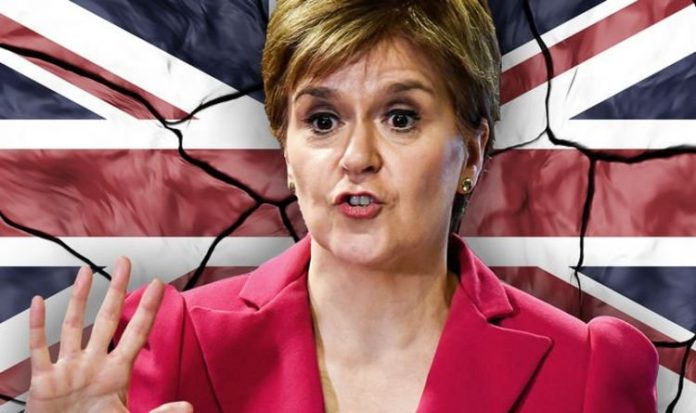Scottish First Minister Nicola Sturgeon has kept open the possibility to hold a second referendum on independence next year. Ms Sturgeon has only revealed this month she wants the vote to be in the early part of the next Scottish parliamentary term, following elections to Holyrood in spring 2021. If the Scottish National Party (SNP) wins a majority, senior figures believe it will give them the mandate to demand a referendum, regardless of what Prime Minister Boris Johnson thinks about it.
So far, since the start of 2020, opinion polls have given “Yes” campaigners a consistent lead over their unionist rivals.
However, Mr Johnson has repeatedly said he will refuse to allow a plebiscite – leading to unanswered questions about what the SNP will do next.
That is a subject that divides hardliners who want a Catalonia-style illegal referendum and those prepared to play the long game who think the refusal to allow a vote will only fuel support for independence.
As a standoff between Ms Sturgeon and Mr Johnson looks inevitable, another constitutional dilemma, which was first raised during the 2014 Scottish independence campaign, has resurfaced.
Four centuries after the Union Jack was created following the uniting of the English and Scottish crowns, the prospect of a Scottish exit in 2014 focused minds on what it could look like if the country were to depart, taking its blue-and-white St Andrew’s cross with it.
At the time, constitutional experts suggested that the remainder of the UK was not necessarily required to abandon the current flag, although Lord West, the former deputy chairman of the parliamentary flags and heraldry committee, claimed it was “nonsense” to imagine St Andrew’s blue could remain.
Peter O’Donoghue, who goes by the title of York Herald, told The Guardian that such a dramatic change “would be discussed by the Garter King of Arms [the most senior officer at the College] with the Government and the Palace”.
Pressed over whose final responsibility it would have been to choose the design, he acknowledged it was a grey area, saying there was no automatic legal bar on the current red, white and blue flag, and no established mechanism for changing it.
According to the former chief executive of the Flag Institute Charles Ashburner, people living in the UK would have definitely wanted a new flag to represent them if there was a ‘Yes’ vote.
His comments came after the Flag Institute surveyed its members four years ago and found that 64.5 percent believed the flag should have changed if Scotland left, while 71.5 percent said a new flag should acknowledge Wales, which is not currently represented because it was not part of the English Kingdom when the Union Flag was designed.
JUST IN: EU chaos: Macron could go against bloc’s rules to appease rival
The institute also invited its members to submit new designs.
Alternative designs saw the flag redrawn in red and white or with green elements to recognise Wales’s loyalty to the union.
In 2014, the College of Arms said there were no plans to change the flag if Scotland gained independence as the Queen would have remained the head of state.
However, Mr Ashburner said it would have been possible to change it, as unlike the majority of other countries, it has never been formally adopted as the official flag of the United Kingdom.
A private members bill, tabled in 2008 by Conservative MP Andrew Rosindell sought to address this but was not passed.
Mr Ashburner said he thought the “best case scenario” was that the Union Flag was retained as a “general symbol of Britishness” while a second to represent the United Kingdom was created through public consultation.
The Union Flag, first established on January 1, 1801, consists of three heraldic crosses: the red cross of St George, patron saint of England; the white and blue saltire of St Andrew, patron saint of Scotland; and the red cross of St Patrick, patron saint of Ireland.
John Cridland, former director general of the CBI, was among those who, during the first Scottish independence referendum campaign, stressed the economic value of the iconic 1801 flag.
DON’T MISS:
Sneering EU mocked beans on toast before scallops menu move [REVEALED]
UK leaders ‘accepted replacement of sterling’ with EURO [INSIGHT]
EU feared Brexit talks were being bugged by UK secret agents [ANALYSIS]
He said: “The dynamic red, white and blue of the Union Jack is instantly recognised around the world.
“It’s a symbol of trust in business and helps open doors for British firms in trade markets across the globe.”
Branding expert Andy Wise added: “I think it’s the most recognisable flag in the world – if you go abroad you see the Union flag on T-shirts and bags.
“Visually the Union Jack is striking and dynamic. So are the Stars and Stripes, and the Japanese flag from a design perspective is lovely and minimalist.”







